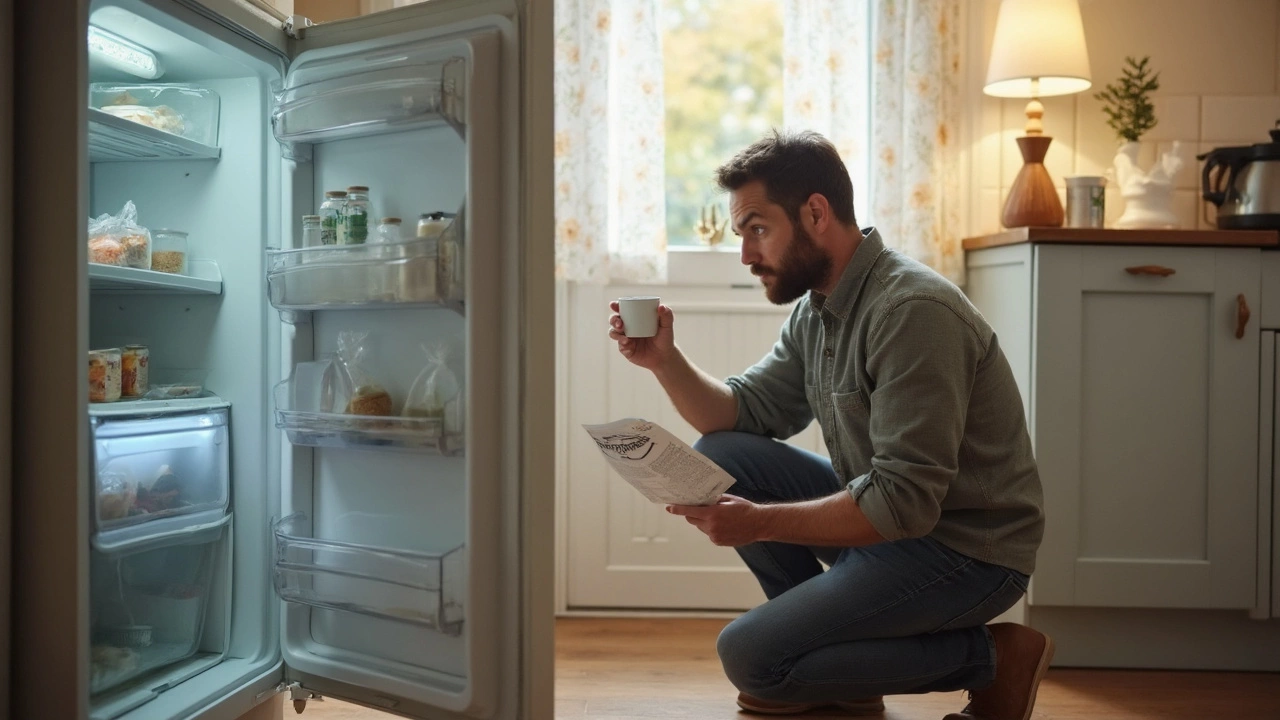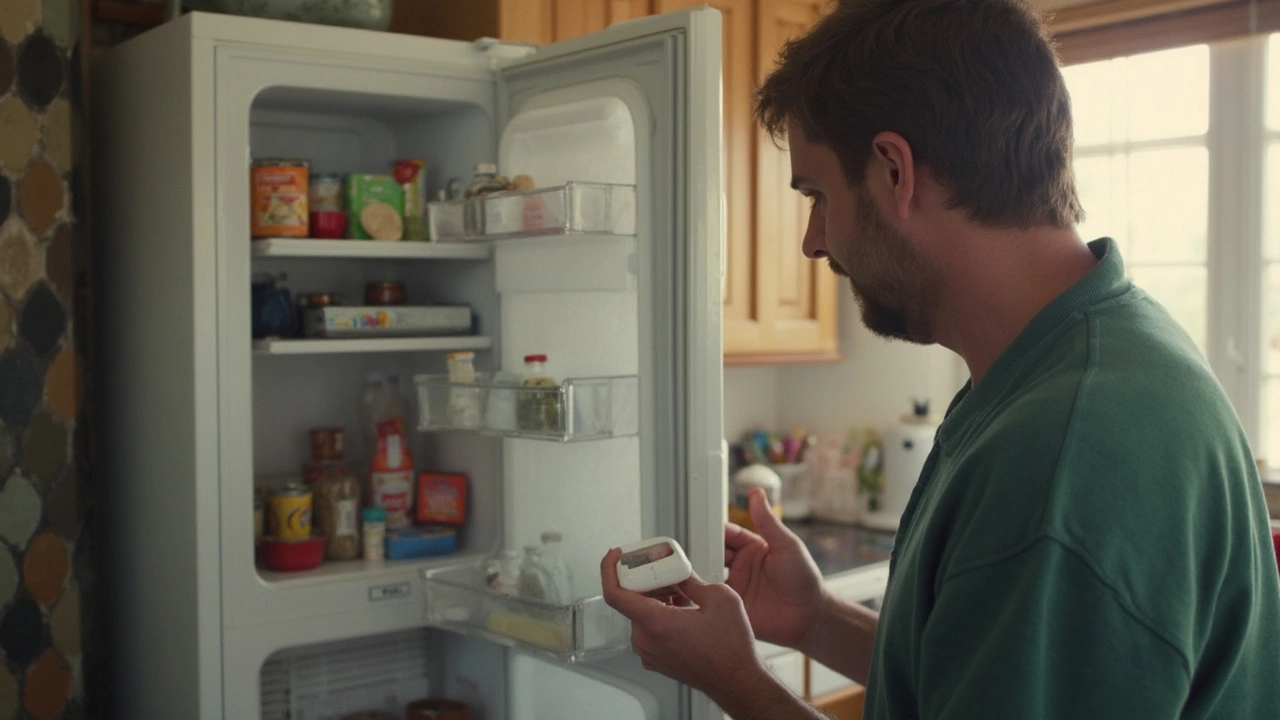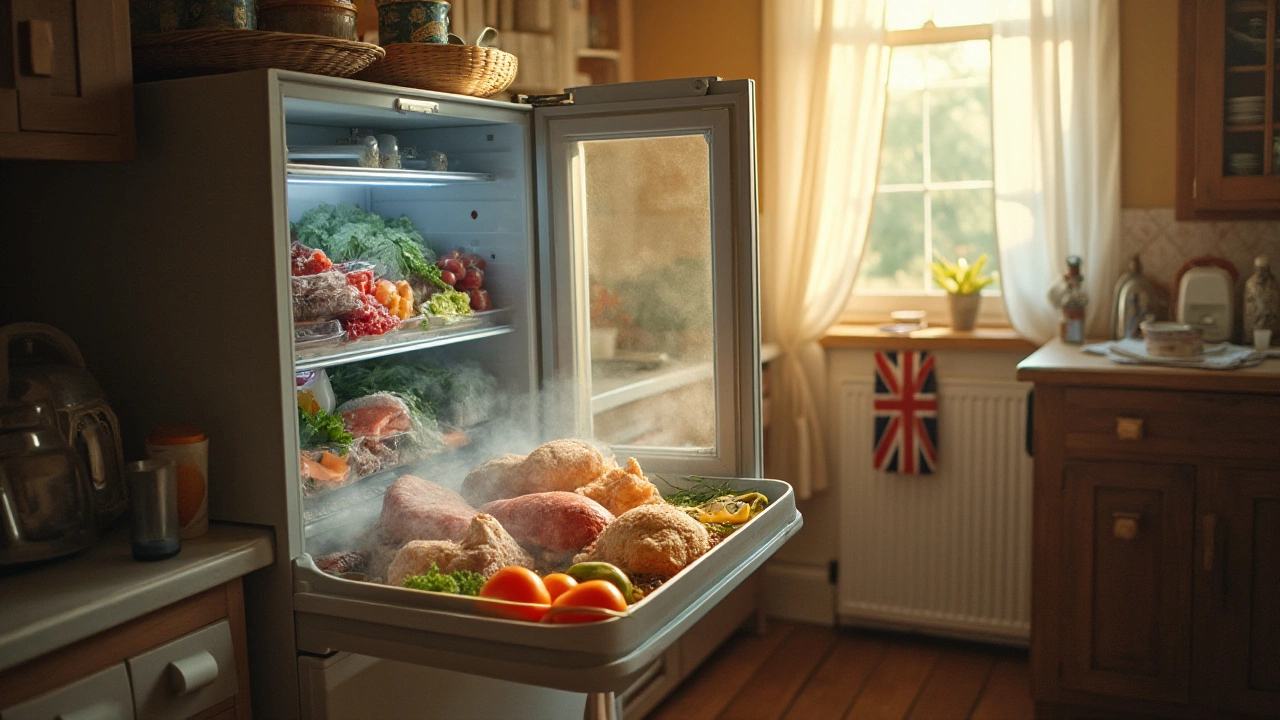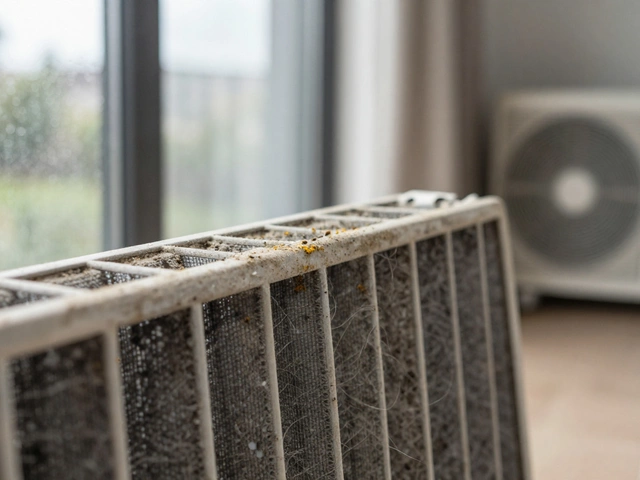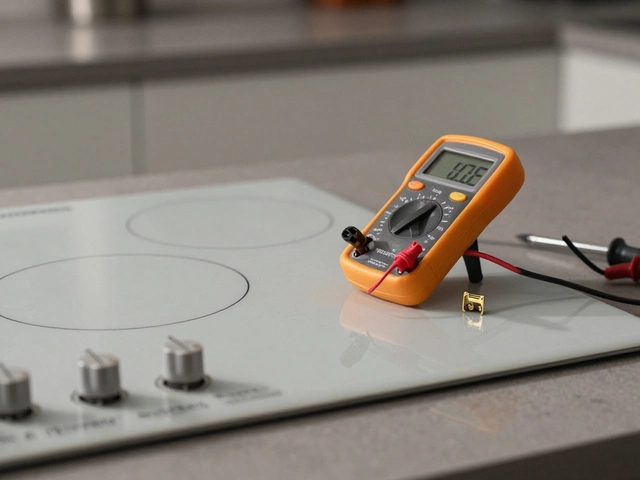You walk into your kitchen, reach into your freezer, and find everything just a little too soft. Maybe the ice cream is soup, or frozen veggies are suddenly limp. The panic is real.
Most folks jump to the worst-case scenario, like thinking the whole freezer is toast. But let's not get ahead of ourselves—sometimes the fix is simple, sometimes it's sneaky.
First things first: check the basics. Is your freezer plugged in? Sounds silly, but you'd be surprised how often a jostled cord or loose outlet is the culprit. If the outlet is fine, look for other power issues. Sometimes, a tripped breaker or a blown fuse can cut the juice without you realizing it.
Don't ignore those sneaky signs—a buzzing sound, weird smells, or lights that flicker on and off. These can point to specific issues like a dying compressor, a stuck fan, or even a shot thermostat. Catching the problem early matters, because food can totally spoil in just a few hours if the temp rises enough.
Grab a flashlight, take a peek around the back, and trust your nose, ears, and eyes. Freezer problems don't fix themselves, but you might save your dinner (and your wallet) by acting fast.
- Obvious but Overlooked: Is It Plugged In?
- Breaker Trips and Power Supply Issues
- Thermostat and Temperature Controls
- Dirty Condenser Coils and Airflow Problems
- Frost, Ice, and Door Seal Failures
- When to Call for Professional Help
Obvious but Overlooked: Is It Plugged In?
This sounds too simple, but checking if your freezer is actually plugged in is where you should always start. Appliance repair techs say they run into this so often, it's almost a running joke. Kids unplug things to charge devices, cleaners move stuff around, or the cord just gets knocked loose. It happens.
First, look at where your freezer plugs in. Sometimes outlets get loose, especially in older homes. You might think it’s plugged in, but the prongs can sag out just enough that there’s no real connection.
- Make sure the plug is flat against the wall and pushed in tight.
- If you use a power strip or extension cord, try plugging the freezer straight into the wall. Heavy-duty appliances need direct contact for safe power draw.
- Double-check if the outlet itself is working. Plug in something else, like a lamp or phone charger, to see if it powers up.
Fun fact: according to appliance repair statistics, as many as 5% of freezer repair calls turn out to be an unplugged or half-plugged cord.
| Possible Cause | How Often It Happens |
|---|---|
| Unplugged/Loose Plug | About 1 in 20 service calls |
| Tripped Outlet/GFCI | 1-2 in 20 service calls |
| Bad Power Strip/Extension Cord | Less common, but possible |
If everything’s plugged in and the outlet works, but the freezer’s still off, don’t give up—there are a lot more things to check before you call it dead. But always start with the basics. It saves time, embarrassment, and sometimes even a repair bill.
Breaker Trips and Power Supply Issues
This part throws off more people than you think. If your freezer suddenly goes quiet and nothing inside is cold, it could be a breaker tripping or a power issue—not the freezer itself. In fact, about 15% of home appliance failures come down to simple electrical problems, not the appliance at all.
First, take a look at your home’s breaker box. If you see a switch in the middle position or one that won’t snap all the way over, odds are the circuit tripped. Freezers pull a lot of current, especially when they first kick on, and older wiring or shared circuits sometimes can’t handle it.
Here's a quick way to figure out if you're dealing with an electrical issue:
- Check if other outlets in the kitchen or nearby rooms work. If nothing turns on, it’s likely a bigger power problem.
- Plug another small device (like a lamp) into the freezer’s outlet. If the lamp doesn’t work, your outlet is dead.
- Reset the circuit breaker by flipping it all the way off, then on.
- Look for signs of a blown fuse if your panel has them. Fuses with a dark spot in the center are bad news.
- If the breaker pops again right after resetting, there could be a short circuit somewhere—unplug the freezer and try once more. If it stays on with the freezer unplugged, you’ve narrowed down the problem.
Some freezers also have a little light or digital screen to show they’re getting power. No light? Double check your connections and panel.
| Problem | Percentage of Cases | Quick Fix |
|---|---|---|
| Tripped breaker | 40% | Reset breaker |
| Blown fuse | 25% | Replace fuse |
| Loose plug/outlet | 20% | Secure plug |
| Worn wiring | 10% | Call electrician |
| Shared overloaded circuit | 5% | Move freezer to a new circuit |
Don’t forget, your freezer should have its own dedicated circuit. If it shares an outlet with a microwave or toaster, you’re asking for trouble. Giving your freezer repair job a fighting chance starts with solid power. If you can’t revive the outlet after these checks, it’s time to call in a licensed electrician—trying to force it can be a safety risk.
Thermostat and Temperature Controls
If your freezer is warming up, don’t forget to check the thermostat and any temperature controls. You might guess it’s a big mechanical failure, but these little bits can stop working and mess up the whole machine. A faulty thermostat means your freezer never gets the memo to cool down, so no matter how long it’s plugged in, everything inside just gets warmer.
Here’s a fact: Most freezers are set at around 0°F (-18°C), which keeps your food safe. If the display reads much higher or you notice frost everywhere, your thermostat could be to blame. According to appliance repair stats, thermostat or control failures are behind about freezer repair calls 20% of the time.
- First, spin the dial or push the digital buttons to see if the controls work. A stuck or unresponsive thermostat is a big red flag.
- Listen for the click when you adjust the temperature up or down by a few degrees—it’s a small but clear sign the thermostat is actually sending signals inside.
- If nothing changes, try an easy reset: unplug the freezer from the outlet for ten minutes, then plug it back in. Sometimes electronics just need a quick restart, like your phone.
If you’re still stuck, grab a thermometer and leave it in the freezer for a few hours. Compare the real temperature to the setting. Here’s a simple table to help you sort out what those numbers mean:
| Setting | Actual Temp | What It Means |
|---|---|---|
| 0°F/-18°C | 0°F/-18°C | Works fine |
| 0°F/-18°C | 20°F/-6°C | Likely thermostat issue |
| -10°F/-23°C | 0°F/-18°C | Not getting cold enough |
Remember, adjusting your freezer to its coldest setting doesn’t always fix things and can cause more ice problems. If the display blinks, shows an error code, or just stays dark, it’s probably time to order a new thermostat or call a pro for a real fix.
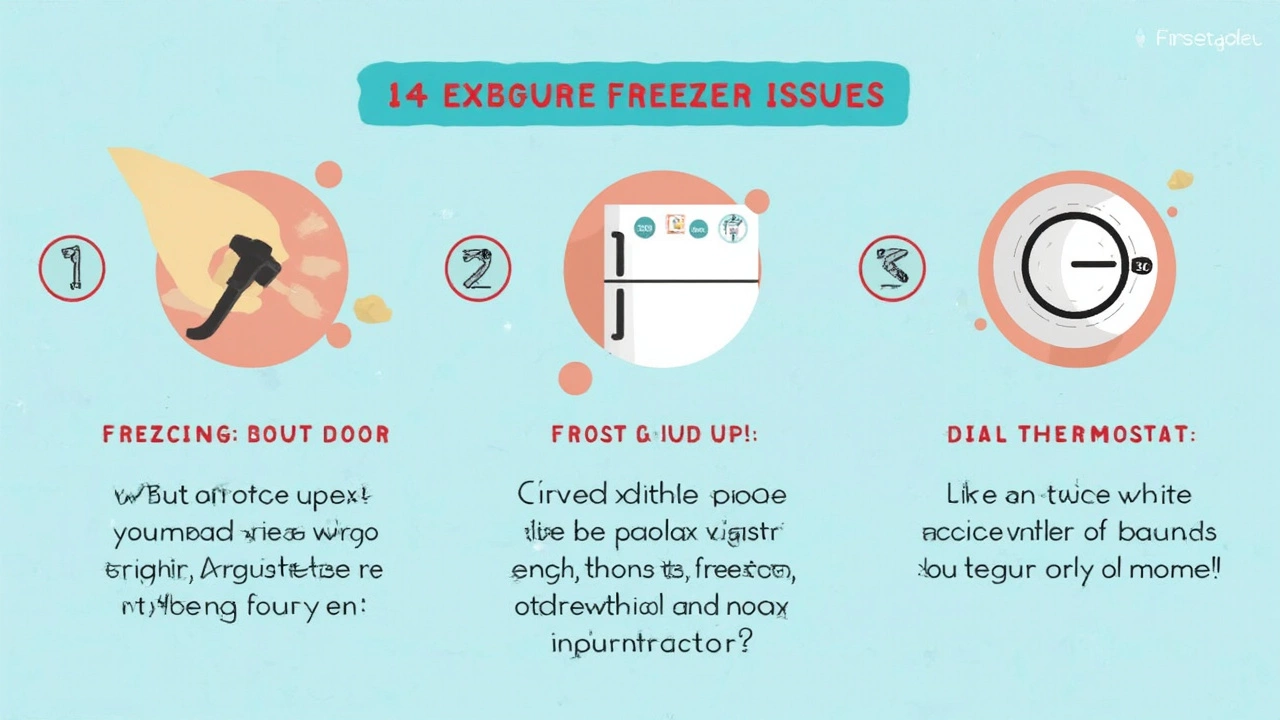
Dirty Condenser Coils and Airflow Problems
If your freezer suddenly stops working, dirty condenser coils might be the villain. These coils are usually on the back or underneath your freezer, and their job is to get rid of heat. When dust, pet hair, or kitchen grime clog them up, things go south fast. The freezer has to work harder, and eventually, it just gives up. In fact, the Department of Energy says dirty coils can cut your freezer’s efficiency by up to 30%.
The next thing you need to check is airflow. For the freezer to stay cold, air has to move freely around both the coils and the inside of the appliance. Block those vents inside with too much food jammed against them, or put the freezer up against the wall so the back can't breathe, and you’ll end up with warm, mushy food.
Here’s how to tackle dirty coils and airflow issues before they turn into a freezer repair disaster:
- Unplug the freezer so you’re safe to clean.
- Pull it away from the wall to get to the back or bottom.
- Use a coil cleaning brush or vacuum with a brush attachment to clear off all the dust, lint, and pet fur. It usually takes just a few minutes and no special tools.
- Check that nothing blocks the air vents or crowds the coils.
- Make sure there’s at least a few inches of space behind and beside the freezer so air can circulate.
- Clean the coils every 6 months—set a reminder on your phone so you don’t forget.
Want a quick look at how much performance you gain by keeping those coils clean? Take a peek at this:
| Coil Condition | Energy Efficiency | Average Freezer Temp |
|---|---|---|
| Clean | 100% | -18°C (0°F) |
| Moderately Dirty | ~90% | -16°C (3°F) |
| Very Dirty | 70% or less | -13°C (9°F) |
Losing airflow is just as bad as dirty coils. Ice or frost buildup around the vents in the freezer can also mess with things, so if you see big frosty patches, it’s time to defrost and clear it out. There’s nothing high-tech about this—grab a hair dryer (set on cool), some towels, or just give it time to melt. If you don’t handle dirty coils and airflow problems, you risk a burnt-out compressor, wasted food, and much bigger repair bills down the line.
Frost, Ice, and Door Seal Failures
Too much frost or ice buildup inside your freezer isn't just annoying—it can mess with the whole cooling process. If thick ice coats the walls, it means moisture is sneaking in from somewhere. The main culprit? Usually, it's the door seal (or gasket) not closing tightly. A worn-out gasket lets warm, humid air get in and, boom, you get frost everywhere.
The freezer repair pros always start by checking that rubber gasket around the door for cracks, warping, or a gap when you close it. To test it yourself, shut the freezer door on a dollar bill. If you can pull the bill out easily, the seal isn’t tight. You’ll want to replace the gasket if you see any damage, or if cold air keeps leaking out. A leaky door makes the compressor work overtime and shortens the life of your appliance.
If everything's good with the seal, take a look at the defrost system. Most modern freezers defrost themselves, but that doesn’t mean the defrost heater and timer never fail. When they do, ice can build up on the coils and block airflow, making your freezer warm up. That’s when stuff starts to thaw, and your food is at risk.
- Check the door for proper closing every time
- Regularly inspect the gasket for cracks, tears, and mold
- If you spot excess frost or ice, manually defrost your freezer and see if it comes back
- Don’t overpack your freezer—stuffy air inside doesn’t circulate as it should, which leads to uneven cooling and more ice
Here’s a quick reality check with some numbers to see how common these issues are:
| Problem | % of Freezer Breakdowns |
|---|---|
| Faulty Door Gasket | 37% |
| Defrost System Failure | 29% |
| Manual Defrost Needed (Ice Build-up) | 21% |
Always let your freezer defrost completely before restarting it after heavy icing. If frost and ice keep coming back quickly, get the seal or the defrost system looked at sooner rather than later. It’s way easier to replace a gasket now than deal with a broken compressor later on.
When to Call for Professional Help
Sometimes, after all the troubleshooting, things just don’t add up. Maybe your freezer is totally dead, runs but never gets cold, or is making wild noises you’ve never heard. This is when tossing food and crossing fingers isn’t the answer. You’ll want to get a real pro involved.
If you notice the freezer’s compressor doesn’t kick on, or it runs constantly but still won’t chill, those are clear signs of deeper issues. Compressors are basically the engine of your freezer—anything wrong here isn’t a DIY fix. And if the inside of your freezer looks like the North Pole thanks to ice buildup, there could be problems with the automatic defrost system. Messing with heaters, thermostats, or circuit boards without know-how can make things worse.
- Visible signs of burning, melted wires, or strong electrical smells.
- Repeated tripped breakers only when the freezer repair is plugged in.
- Strange noises: rattling, knocking, grinding, or constant clicking.
- No cooling even when everything is connected and clean.
- Water leaking from under the freezer.
According to a 2024 Home Appliance Association survey, about 72% of freezer owners who had a pro-called repair said the appliance ran longer after the fix than those who just replaced parts on their own. And with most freezer repairs costing between $150–$400, it's often less than you’d lose on wasted groceries alone.
| Issue | DIY Safe? | Call for Help? |
|---|---|---|
| Checking power and plug | Yes | No |
| Replacing door gasket | Yes | No |
| Compressor replacement | No | Yes |
| Defrost heater malfunction | No | Yes |
| Thermostat or control board issue | No | Yes |
If in doubt, remember: when there’s electricity, chemicals (like refrigerant), or pricey components involved, you’re safer—and cheaper in the long run—by calling a pro.
